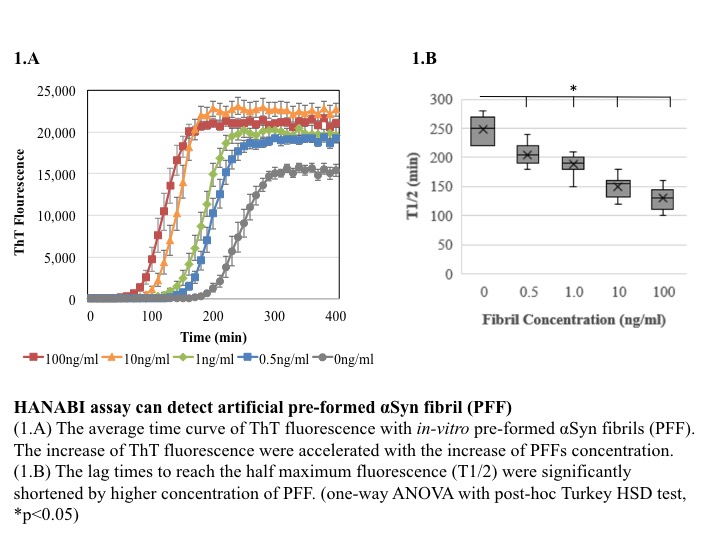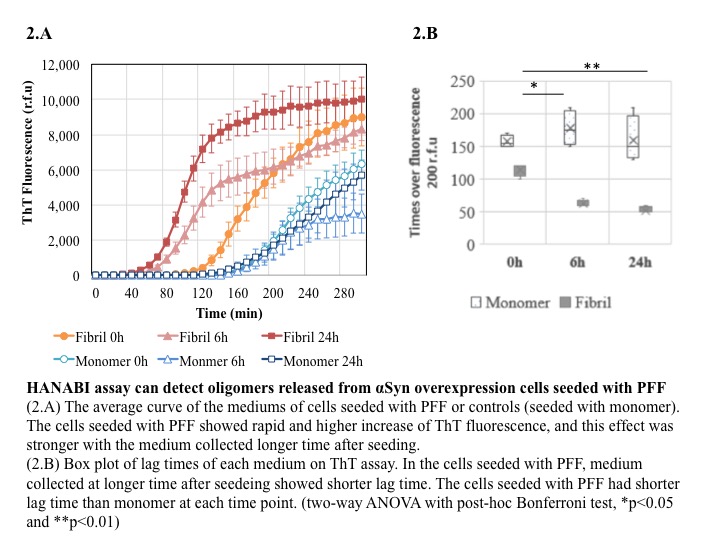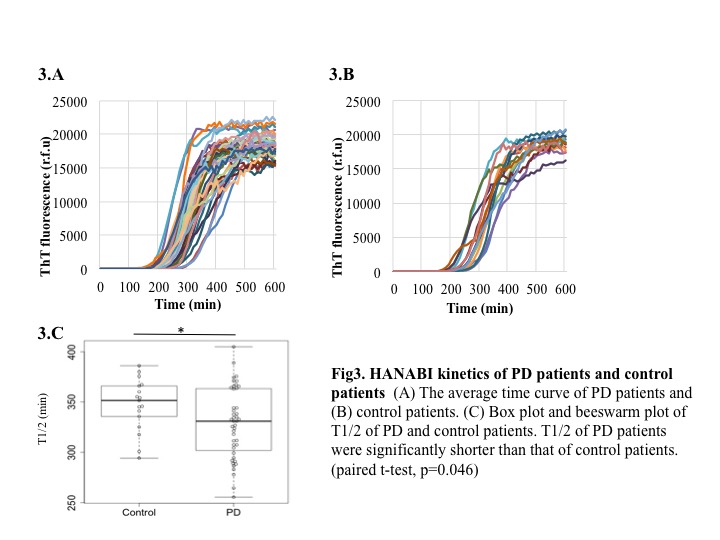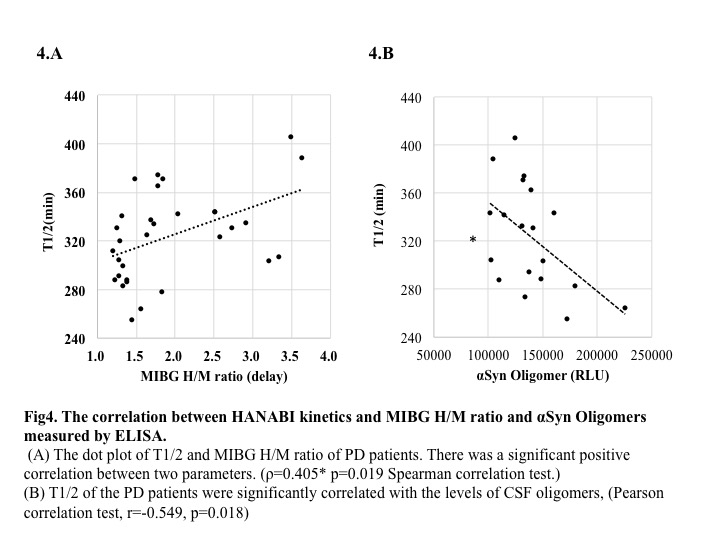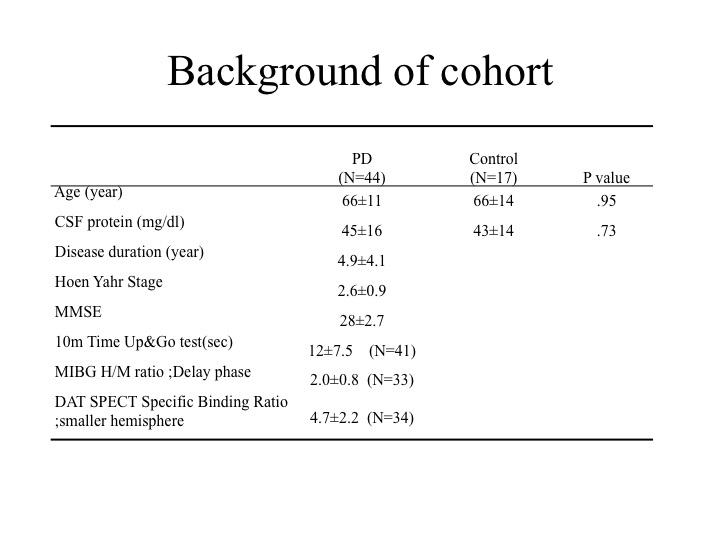Session Information
Date: Saturday, October 6, 2018
Session Title: Parkinson’s Disease: Clinical Trials, Pharmacology And Treatment
Session Time: 1:45pm-3:15pm
Location: Hall 3FG
Objective: To establish a new technique quantifying misfolded alpha-synuclein (αSyn) oligomers in the CSF and to investigate their clinical – pathological significances in Parkinson’s disease (PD).
Background: The accumulation of misfolded αSyn aggregates has been suggested as a key player in the pathogenesis of PD and the most promising target of disease modifying therapy. In order to develop the disease modifying therapies targeting to the aggregation of αSyn, a sensitive and specific biochemical biomarker is necessary for monitoring the disease progression and the therapeutic efficacy as well as the selection of the appropriate targets in early stage. Recently, some groups have reported that the levels of αSyn oligomers in CSF are elevated in PD patients and can be specifically amplified by cyclic agitation in vitro. In this study, we report the quantification of αSyn oligomers using their activities to seed amyloid formation on ultrasonication-induced fibril formation assay and give insights about thier clinical – pathological significances.
Methods: We developed a novel system, HANdai Amyloid Burst Inducer (HANABI), which enables ultrasonication-induced seeds dependent formation of amyloid fibrils. The assay was adapted with the preformed αSyn fibrils (PFF) prepared in vitro and the cell culture mediums from the αSyn overexpression cells in order to confirm its ability to detect minute amounts of αSyn oligomers released from neurons. We investigated the CSF from the cohort of 44 PD patients and 17 control patients [table1] and compared the results of HANABI assay with clinical scores and imaging data.
Results: The studies with PFF showed the ability of HANABI assay to detect as little as 0.5 ng/ml of PFF and a significant negative correlation between the amounts of PFF and the lag time to form amyloid fibrils [figure1]. The assay also detected the αSyn oligomers in the culture mediums of cells seeded with PFF [figure2]. The analysis of CSF from the cohort showed that the PD patients had significantly shorter lag time than controls (PD 328±35 min vs controls 348±27 min, p=0.04) [figure3], and the lag times of PD patients were significantly correlated with MIBG H/M ratio (r=0.41, p=0.02), as well as CSF oligomers measured by ELISA (r=-0.55, p=0.02) [figure4].
Conclusions: The findings suggest that HANABI is a sensitive tool to detect misfolded αSyn oligomers in CSF and can be useful for the diagnostic biomarker as well as monitoring the disease progression. (The 11th congress of movement disorder society of Japan)
To cite this abstract in AMA style:
K. Kakuda, K. Ikenaka, K. Araki, Y. Kajiyama, M. So, H. Hayakawa, T. Omichi, K. Baba, K. Konaka, T. Tokuda, Y. Goto, H. Mochizuki. Development of a biomarker for Parkinson’s disease by measuring alpha-synuclein oligomers in cerebrospinal fluid with ultrasonication-induced amyloid fibril formation [abstract]. Mov Disord. 2018; 33 (suppl 2). https://www.mdsabstracts.org/abstract/development-of-a-biomarker-for-parkinsons-disease-by-measuring-alpha-synuclein-oligomers-in-cerebrospinal-fluid-with-ultrasonication-induced-amyloid-fibril-formation/. Accessed April 2, 2025.« Back to 2018 International Congress
MDS Abstracts - https://www.mdsabstracts.org/abstract/development-of-a-biomarker-for-parkinsons-disease-by-measuring-alpha-synuclein-oligomers-in-cerebrospinal-fluid-with-ultrasonication-induced-amyloid-fibril-formation/

